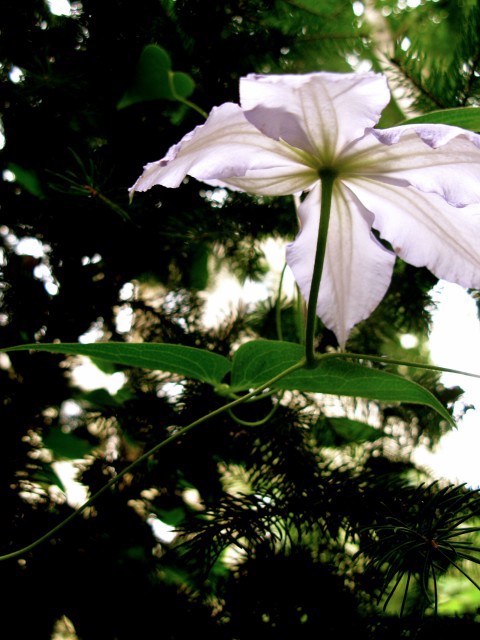What Kind Of Wine Do You Want?

“I want wine that excites me, that feels so good to drink that one sip urges on the next and the next after that. I want a wine that tells a story of a place and a people and a culture, that is not the predictable equivalent of a franchise restaurant but more like a little mom-and-pop’s, where you’re not always sure what you’ll find but you know it can have the capacity to inspire.”
— Me, I want a wine that endrunkens me, that stifles the shakes and soothes the sour stomach. I want a wine that evens out the edges of the day and helps me to forget my fears. I want a wine that shouts down my anxieties and allows me to kid myself that everything is going to be alright, even if I know that illusion will only last until the end of the bottle. That’s what I want in a wine. But if you’re looking for some kind of classier experience or whatever, something, I dunno, transcendent, the millionaires at the Times have a list of $20 bottles that should do the trick.
Photo by Stephane Bidouze, via Shutterstock
White Man Caucasian
Were you aware that Mitt Romney is white? And the President, not so much? The Romney campaign just wants to make sure you understand that.
The NDA Generation
We don’t make fun of children, so we won’t, because it’s all their parents’ doing. (And also, these kids are totally adorable and funny.) But everything else aside in this hot mess… who taught pre-tweens about non-disclosure agreements? That is not right. I thank the universe every day that I’ll be dead when you kids are running the world. [via]
Sherman Hemsley, 1938-2012
“’The Jeffersons’ made its debut in January 1975; in the opening episode, George, the owner of a successful cleaning business; his wife, whom he called Weezy (played by Isabel Sanford, who was 20 years Mr. Hemsley’s senior); and their son, Lionel (Mike Evans), leave Queens and, in the words of the show’s memorable theme song, are ‘movin’ on up’ to Manhattan’s fashionable Upper East Side — to ‘a deluxe apartment in the sky.’”
— Thanks for the explication, New York Times! Anyway, yes, let us celebrate the life of Sherman Hemsley, actor, sictom icon and prog-rock aficionado.
The Resurrection of Auto-Tune
by Luke Hopping

Content series are produced in partnership with our sponsors. This edition of “Summer Tracks” is brought to you by the new Acura ILX. Music is about having fun and enjoying your listening experience. Check out the influence this cultural phenomenon has had on popular songs to-date. You can listen to these songs and more while driving the new Acura ILX.
Time called it one of mankind’s worst inventions, placing it directly alongside potentially lethal Red Dye #2 and unambiguously lethal DDT. Jay-Z, who found it in himself to forgive a man for publically accusing his friend of having HIV, was less in control of his emotions when he demanded its extinction in a Grammy Award winning single. Trey Parker and Matt Stone mocked it to get under Kanye West’s skin in their scorched earth assault on the pop icon’s ego. In an age of gridlock, discord, and cultural fragmentation, it seems we have really settled on auto-tune, the pitch altering technology that is used to correct off-key notes on musicians’ vocal tracks, as the root of all evil. Certainly some of this anger must be misplaced. After a handful of wayward pop stars and industry manufactured up-and-comers were alley-ooped to the top of the charts by auto-tune in the late 2000s, “real” musicians began competing to make the most overt displays of outrage in order to advance their own wayward and manufactured careers. In 2009, Death Cab for Cutie took to the stage at the 51st Grammy Awards donning blue ribbons in show of their opposition to the apparently soul-corrupting studio effect (not like that sort of stunt might devalue the currency of any other awareness campaigns that rely on ribbons). Suddenly it was fashionable, if uncontroversial, for purists to take a swipe at the latest craze.
This may seem like an odd time to offer an exculpation of auto-tune. After all, the fad is mostly a relic of the early recession years, when we yearned to lose ourselves in entirely new depths of vapidity. But auto-tune remains a fixture of our listening experience, albeit in a less gaudy manner than before. Did you really think R. Kelly had the pipes to belt “Share My Love,” an airtight Barry White imitation, unassisted? Artists frequently call in auto-tune to tighten up their vocal tracks. Maybe it’s time we stop pretending everything we consume ought be organic and accept the fact that we’d rather have these gems than not. There will always be room for listeners and artists that crave a more “human” approach.
The origins of pitch-perfection technology are far less sinister than the boys from Death Cab would have you believe. When auto-tune first wheezed life into song in 1997, creator Andy Hildebrand never could have imagined the cultural backlash he would one day face (though, as a former engineer at Exxon, he was probably accustomed to being unpopular). If anything, initial reactions were praiseful. First deployed to help an aging Cher regain some of her umph on 1998’s “Believe,” the result was a hit that masterfully straddles the club and the bedroom. At the time, producer Mark Taylor led others to believe he’d achieved the underwater-sounding vocal effect through some vocoder voodoo, refusing to reveal his secret ingredient until much later. With his true technique shrouded in mystery, critics dubbed the unique method of pitch correction the “Cher Effect.”

But, when it comes to legitimizing auto-tune, the forty-ton gorilla in the room will always be T-Pain. No artist has made more extensive use of the technology, or been so publically castigated for it, than Faheem Rasheed Najm. He even released his own iPhone app called “I Am T-Pain,” that, for $2.99, will reproduce his signature effect at home. You’ve probably withstood T-Pain’s particular brand of everybody-drink-up music at some event you felt too old to be at, but, just in case you have dignity, allow me to introduce you. To many, his neon top hat has come to symbolize all that is wrong with the music industry, as well as consumers’ unrealistic expectations of performers. To all who’ve seen him, it’s abundantly clear that T-Pain is a clown. But what genre of music isn’t dominated by its share of undeserving hacks? T-Pain’s star rose and fell — quite quickly, I might add — and guess what? Bruce Springsteen is still filling concert venues. That real music we all claim to love so much (while pirating by the rar-load) isn’t dead. In fact, if the dismal sales of T-Pain’s most recent RevolveЯ are any indication, it looks like Jay-Z might have gotten what he wished for.
While auto-tune may never escape the stigma of being cheap, it doesn’t have to remain a gimmick. Despite an outpouring of establishment resistance, auto-tune has contributed to the creation of a handful of wonderful pieces of music in the fifteen years since its inception. At the very least, its proliferation provides a fascinating case study in our culture’s obsession with making all things, even human expression, flawless. Here, as evidence of auto-tune’s cultural value, are several captivating tracks that would have never graced our eardrums were it not for pitch-correction technology.
http://www.youtube.com/watch?v=LbXiECmCZ94
Believe — Cher
http://www.youtube.com/watch?v=D3ufEF45-J4
Share My Love — R. Kelly
Both mentioned above. Auto-tune’s bookends are disparate, to say the least.
http://www.youtube.com/watch?v=8XAgLUHFXpM
Art of Uff — Uffie
Auto-tune is sometimes characterized as a sort of musical Midas touch. If that’s the case, then it’s uniquely well suited for Uffie, the so-called European Ke$ha. Part street swagger, part high fashion; her beauty is as intimidating as her success. Auto-tune exists only to make her life seem that much more mythological.
http://www.youtube.com/watch?v=mHyu3rUOyB0
Bad News — Kanye West
808s and Heartbreak probably constitutes the closet thing Kanye will ever experience to a flop (it only went platinum once!). To explore the passing of his mother, the end of his brief engagement, and, of course, his own narcissism, Kanye made some interesting stylistic choices. Abandoning his beloved sampler, Yeezy delved headfirst into into King Kong 808s and electro-rhythms. The most notable change, however, was his voice, which was auto-tuned on nearly every track. The result was a record that was far more R&B; than hip hop. Characteristically overwrought, the album was at least prescient; if you’re ever wondering where Drake came from, look no further.
http://www.youtube.com/watch?v=GsgrcYGDvmY
Lollipop — Lil Wayne
People forget “Lollipop,” the lead single off Lil Wayne’s magnum opus Tha Carter III, preceded and outsold “A Milli.” Definitely an example of the more garish use of auto-tune that prevailed during the T-Pain Era, but a party song I have some emotional attachment to.
http://www.youtube.com/watch?v=66V_TkwbgRA
You Don’t Know What Love Is — 2000F & J Kamata
When flipped to overdrive, auto-tune turns vocal tracks into distant, robotic voices. 2000F & J Kamata, however, don’t go for the whole “fear the future” electronica thing. Instead, they use auto-tune to accompany some pretty relaxing chill out music.
http://www.youtube.com/watch?v=GS_K2eg7Gx8
Super Rich Kids — Frank Ocean (ft. Earl Sweatshirt)
Not all auto-tuners choose to turn their voices into duck calls, some musicians (particularly R&B; singers) just need an extra layer of polish. As final proof, I submit that if Frank Ocean is doing it it must be cool.
This content was created for our sponsor the new Acura ILX.
Boston, July 24, 2012
★★★★ Tedious heat through midday gave way to an incoherent but captivating cavalcade of phenomena. Thunder and a downpour arrived, with rain sluicing off the rooftops, but the heat and sun rallied back, unbroken. Then came another downpour at dinnertime, but the late sunshine returned even as the rain continued pounding down. When I used to live in Boston, a decade and a half ago, the guy who did weather every day on the telephone was named Rob Gilman, and one morning he went ahead and predicted afternoon rainbows, and he was correct. These restaurant windows faced northwest, the wrong way for rainbows, but when I checked my hunch on Twitter afterward, there had in fact been some. We were facing southeast at sunset, as light reflected off buildings in the distance. A blinding streak of coral ran down the glassy side seam of a concrete tower. After dark, storms came one last time, with protracted rolls of thunder and wash after wash of lightning illuminating the clouds. Due overhead, in the confusion, the orange-brown city-at-night cloud cover opened to reveal one patch of delicate pale blue clouds higher up, and near that another patch of deep navy. Who would even want to try to understand? The rain let up, the lightning glimmered gradually off, and there was a cool breeze in the dark.
Keeping Up with the NYPD
“The NYPD has infiltrated and photographed Muslim businesses and mosques in New Jersey, monitored the Internet postings of Muslim college students across the Northeast and traveled as far away as New Orleans to infiltrate and build files on liberal advocacy groups…. Detectives infiltrated mosques, eavesdropped in cafes and kept tabs on Muslim student groups, including at Rutgers. The NYPD kept files on innocent sermons, recorded the names of political organizers in police documents and built databases of where Muslims lived and shopped, even where they were likely to gather to watch sports.”
— But they’re not conducting “official police duties.”
The Mid-Summer Garden Crisis
The Mid-Summer Garden Crisis

If, like me, you garden at ground level in a light-challenged, urban backyard — basically the equivalent of a mineshaft — you’ve probably found yourself confronting the end of July and August as something like a mid-life crisis. The garden isn’t unhealthy; except for a few brown spots here and there, caused by the heat or some pests, it’s probably lush and green, a sight your younger, pre-garden self would have imagined with pride as you considered the long odds of having any kind of outdoor space in Manhattan. Yet logic aside, the landscape in front of you seems to lack an element of excitement that once made the venture so utterly absorbing.

Adrift in the summer doldrums, you might long for the exuberance of spring or at least the calming resignation of fall. Or you might second-guess past decisions: What exactly were you thinking when you planted 23 trees in a 300 square-foot space? And why did you put the birch right in the middle, effectively monopolizing the sun and cruelly leaving everything else on the ground starved for light? Are you doomed to spend the rest of your life with ferns, hostas, and maybe some variegated ivy? Must you content yourself with delicate rumination and shadowed melancholy when you would trade it all for a few seconds of transcendent, arena-rocking bliss (botanically speaking)? You will consider ripping everything out and covering the entire yard with a slate patio on top of which two large cement urns will each contain a weeping Serbian spruce not less than 25 feet tall and not more than 4 feet wide. In your mind, it is a severe but elegant and possibly glamorous solution. Here is a garden that could measure up to the ones you have pondered in the glistening pages of the books on your shelves. Or perhaps you will go for something more rustic and serene, the English cottage effect, where butterflies and hummingbirds cavort among the flowering clumps of perennials.

Thankfully, you will not cut down your beloved trees, but instead will work within the confines of your architecture. Maybe you can’t grow fields of lavender or blood-red coreopsis, but if you plan ahead, it’s very possible — as my partner Stephen and I did a few years ago — to plant a crossvine (Bignonia capreolata) and to train it up over a wooden pergola, where it can now get plenty of mid-summer light. Granted, the pinkish, pale-orange flowers are not exactly a blistering revelation of color, but they add a nice contrast to the garden at a period when it’s needed most. Like its close relation the trumpet vine, the bignonia can be invasive, so you’ll definitely want to keep an eye on it, though in a small garden, it’s not difficult to keep even the most aggressive vines under control.

A less invasive option is a summer clematis. We grew ours (“Snow Queen”) up through the branches of our Norway spruce, which for the first time this year is dotted with gigantic, purple, triptastic blooms, a perfect antidote for the green malaise. Though you may be offended by the sight of vines running wild through an evergreen, rest assured that the clematis (at least this one: do you research before you plant) will not harm the tree. The visual discomfort should also inspire you to keep the rest of your garden tidy and under control.

Finally, pots of annuals are always an option. Even a few standard-issue varieties — the sort you find at big-box stores — can help guide you through the end of the summer. Or, again, if you plan ahead, you can grow more interesting ones from seed. This year, I grew a batch of cosmos sulphureus from seeds sent to me from Italy (by way of Japan) by a Tumblr friend who’s the caretaker/gardener of a medieval castle. (A fact you will not want to consider in your cube at work when you are dealing with a non-garden-related mid-life crisis.) I just scattered the seeds in a pot, covered them with a little dirt, and now, two months later, they’ve grown up and are blooming like crazy. Jackpot.

The orange cosmos are a particular source of pleasure for me because ten years ago — in complete violation of the Biblical commandment “Thou shalt not covet thy neighbor’s cosmos sulphureus” — I unsuccessfully tried to steal a few from my neighbor. Feeling guiltier than I cared to admit, I placed them in a discreet spot behind some grape vines that was far too shady for the plants to thrive and so the burglary was for naught. My neighbor had planted his yard with sod — grass (which: ugh, no) — and questioned why I was working so hard to plant trees and shrubs and perennials, when, in his opinion, pots were the way to go. I really hated him when August rolled around and one of his pots was filled with these lovely, orange flowers, while my yard was a torporific swamp of green. He never even watered, which meant the poor flowers would regularly wilt to the verge of death but spring up as soon as it rained or I took pity on them and hosed them down. I had no idea they were cosmos, either, since for some reason all of the cosmos I found online at the time were yellow and double-flowered — almost like a marigold — which did not appeal to me, and of course I was too proud or ignorant to ask my neighbor what was in his pot.

Though not exactly perennials, the cosmos will reseed themselves, as I can attest from having seen my neighbor’s pot thrive for many years before succumbing to drought one year when I was away. For the record, I now get along much better with my neighbor, now that I’m older and can recognize the wisdom of his words. Or well, a few of them.

Matthew Gallaway is the author of The Metropolis Case: A Novel.
